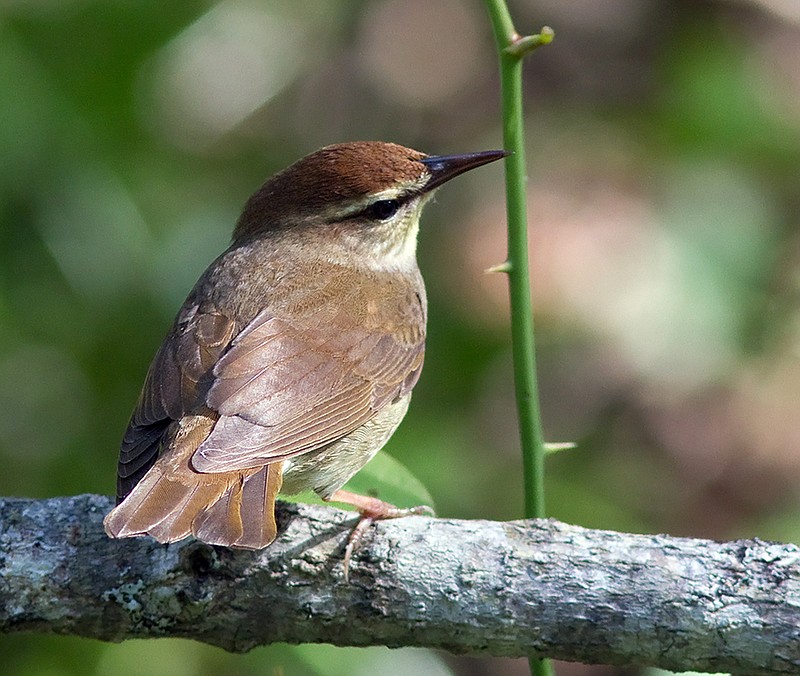McCURTAIN COUNTY, Okla. - Little River National Wildlife Refuge on Wednesday added 160 acres of protected forest and wetlands, a move that will make a large area of the refuge usable by visitors for the first time.
Surrounded by the refuge, the land is now protected from development and will be available for activities including big and small game hunting, birdwatching, and hiking, according to a news release from The Conservation Fund and the U.S. Fish and Wildlife Service. Because the property includes a major access road to the refuge, users will be able to explore nearly 1,000 acres of refuge lands that were previously inaccessible.
The Conservation Fund purchased the property in 2017 and has transferred it to the USFWS thanks to funding from the Land and Water Conservation Fund specifically targeted for priority recreational access projects. Protecting this heavily forested wetland property will ensure it is never sold and developed into an incompatible use within the refuge boundary.
Little River NWR manager David Weaver had identified this land as the "most important acquisition" for the refuge. The Conservation Fund's purchase of the tract helped expedite the protection process and bought time for the USFWS to obtain the necessary funds to acquire the property for their long-term ownership.
"I appreciate The Conservation Fund assisting us with the acquisition of this important and valuable tract of land that will now be protected and managed for wildlife conservation," said Amy Lueders, USFWS regional director. "The tract provides high-quality habitat that supports an abundance of wildlife species. This acquisition also marks a great day for hunters, anglers and wildlife enthusiasts as it greatly increases public access to a large part of the refuge that was unreachable, increasing opportunities for public outdoor recreation at Little River National Wildlife Refuge."
"Acquiring this land and transferring it to the U.S. Fish and Wildlife Service was like filling in a missing puzzle piece," said Julie Shackelford, Texas and Oklahoma programs director at The Conservation Fund. "Protecting wildlife habitat and improving visitor experiences at the refuge seamlessly enhance our goals for economic development and environmental conservation across Oklahoma. We greatly appreciate the leadership of U.S. Senators (James) Inhofe and (James) Lankford and Representative (Markwayne) Mullin in supporting public recreational access priorities."
The Land and Water Conservation Fund is an innovative government funding source that uses offshore drilling revenue to support environmental projects at no burden to the taxpayer. The program has supported a wide variety of land conservation projects in Oklahoma and was allocated to the ongoing protection of Little River NWR. This conservation project was the USFWS's highest priority LWCF recreational access project in the country.
Less than 100 miles from Texarkana, the 15,000-acre Little River NWR protects one of the largest remaining bottomland hardwood forests that can be found in Oklahoma. Most of Little River NWR is forested with bottomland plant species such as willow oak, sweetgum, cypress, white oak and holly, which thrive in the refuge's low, wet habitat. Higher ground areas support species such as loblolly pine, hickory and walnut.
The forest is bisected by an intricate system of creeks, sloughs, and oxbow lakes that creates a dynamic wetland forest environment that is extremely rich in wildlife diversity and abundance.
Neotropical migrant songbirds fill the treetops of the refuge in the springtime. Migratory waterfowl flock to the sloughs and oxbow lakes in the winter. Little River NWR is one of the few places in Oklahoma where the most secretive of birds, the Swainson's warbler, has been known to nest. The Swainson's warbler breeds in southern forests with thick undergrowth, especially in canebrakes and floodplain forests in lowlands and rhododendron-mountain laurel in the Appalachians.
The refuge's abundance of bottomland hardwood forests also provide habitat for squirrel, rabbit, raccoon, waterfowl, white-tailed deer and turkey, which make it a popular hunting and wildlife viewing destination.
Established in 1987, Little River NWR is one of more than 565 national wildlife refuges throughout the United States managed by the USFWS. For centuries, the land was occupied by Caddoan tribes. In 1830, the Choctaw Indians arrived at the end of the Trail of Tears when thousands of Native Americans were forcibly removed from their homelands in Alabama and Mississippi and relocated to Southeast Oklahoma. By the mid-1900s, major timber companies arrived to log forests and eventually start loblolly pine plantations. Little River NWR was established to preserve the bottomland hardwood forests and act as an unharmed sanctuary for migratory birds.


